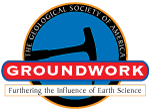Abstract View
GSA Today
Article, pp. 42–43 | Full Text | PDF (91KB)
 |
| Search GoogleScholar for Search GSA Today |
GROUNDWORK:
Nepal at Risk: Interdisciplinary Lessons Learned from the April 2015 Nepal (Gorkha) Earthquake and Future Concerns
1 Jackson School of Geosciences, Univ. of Texas at Austin, Austin, Texas 78712, USA
2 Dept. of Earth & Environmental Sciences, Geology, Univ. Munich, Luisenstr. 37, Munich, 80333, Germany
3 Earth & Planetary Sciences, Univ. of California Santa Cruz, 1156 High Street, Santa Cruz, California 95064, USA
4 COMET, Earth Sciences, Oxford, UK
5 Dept. of Earth & Environmental Sciences, Geology, Univ. Munich, Luisenstr. 37, Munich, 80333, Germany
6 Dept. of Geology, School of Mines, Univ. of Zambia, Lusaka, Zambia
7 Dept. of Geosciences, Univ. of Arizona, Tucson, Arizona 85721, USA
8 GeoHazards International, 687 Bay Road, Menlo Park, California 94025, USA
9 Dept. of Geosciences, Univ. of Montana, Missoula, Montana 59812, USA
Introduction
In response to the devastation caused by the 25 April 2015 MW 7.9 Nepal (Gorkha) earthquake and its aftershocks, the Geological Society of America convened an interdisciplinary session at its 2015 Annual Meeting in Baltimore. The forum allowed researchers from diverse disciplines to exchange information and develop meaningful paths toward reducing the societal impacts of future large earthquakes in the Himalayan region. Major seismic hazards exist near Kathmandu and along the Himalayan front due to incomplete rupture of the Main Himalayan Thrust (MHT) (Avouac et al., 2015; Bendick et al., 2015; Elliott et al., 2015; Lay, 2015) and thousands of co-seismic landslides (Andermann et al., 2015; Gallen et al., 2015; Ohja and DeCelles, 2015; Poudel, 2015). Surprisingly, the 2015 event ruptured a limited region. Given shortening rates and interseismic geodetic indications that the MHT is almost uniformly locked along strike, larger earthquakes may occur along the collision zone.
Manuscript received 17 Dec. 2015; accepted 1 Mar. 2016
doi: 10.1130/GSATG278GW.1
